Award of Excellence
Colón: Collective Strategies for a Regenerative Waterfront
Carolina A. Jaimes, Assoc. ASLA, Graduate, Florida International University
Faculty Advisor: Gianno Feoli
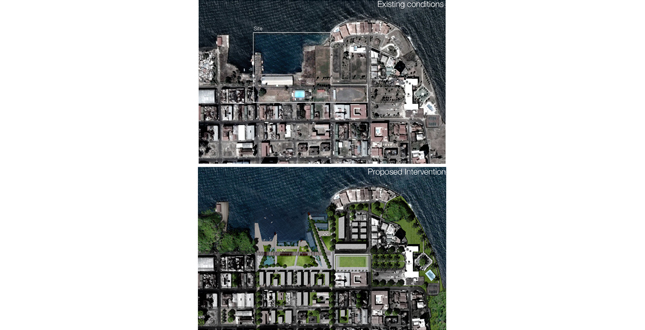 Close Me!
Close Me!Top: Exsiting Conditions. Botton: Proposed Intervention.
Download Hi-Res ImageImage: Carolina A. Jaimes
Image 1 of 16
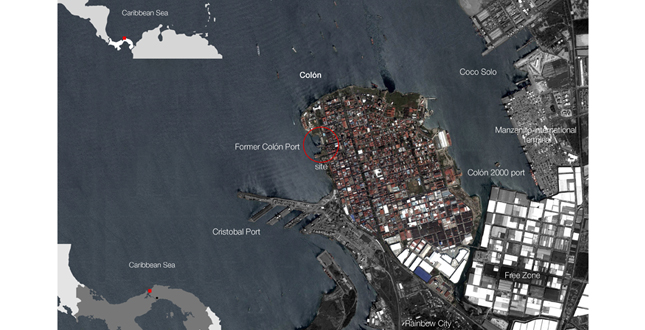
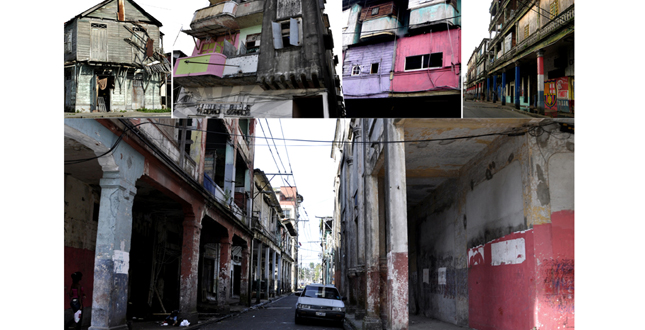 Close Me!
Close Me!Envions. The public realm and typology.
Download Hi-Res ImageImage: Carolina A. Jaimes
Image 3 of 16
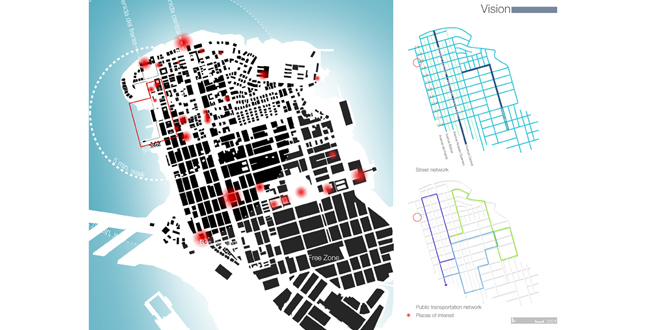
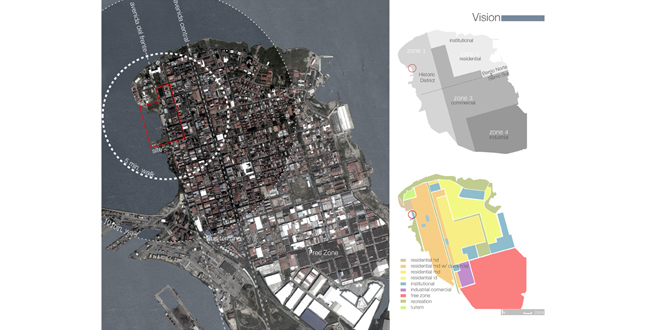
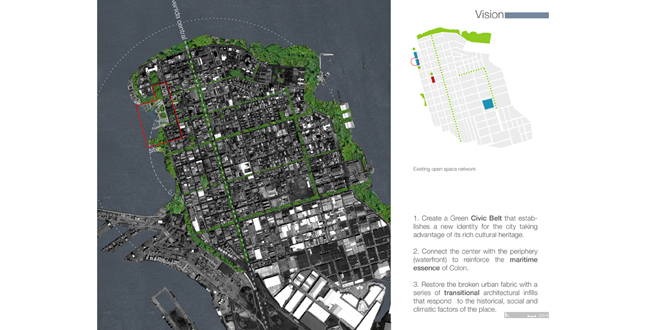
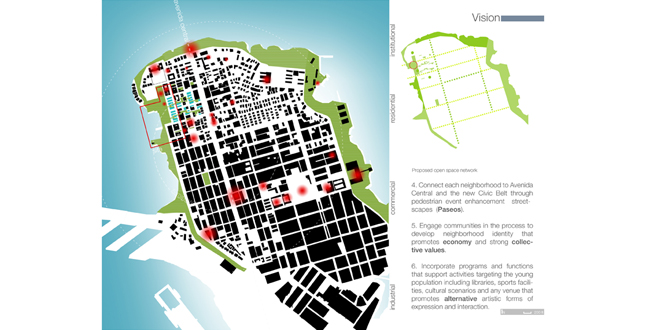
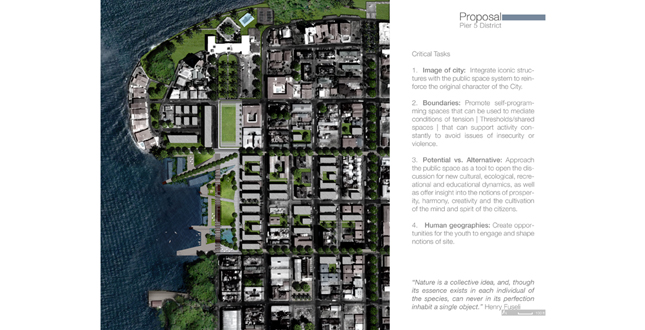 Close Me!
Close Me!Proposal — Pier 5 District. Critical Tasks.
Download Hi-Res ImageImage: Carolina A. Jaimes
Image 8 of 16
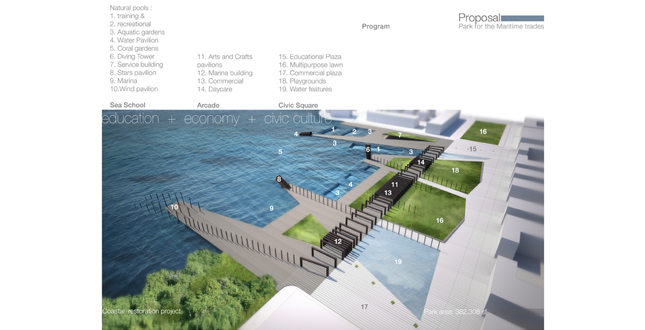 Close Me!
Close Me!Proposal — Park for the Maritime Trade. Program.
Download Hi-Res ImageImage: Carolina A. Jaimes
Image 9 of 16
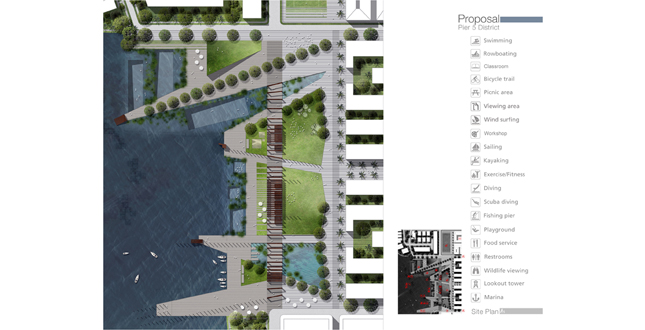 Close Me!
Close Me!Proposal — Pier 5 District. Site Plan.
Download Hi-Res ImageImage: Carolina A. Jaimes
Image 10 of 16
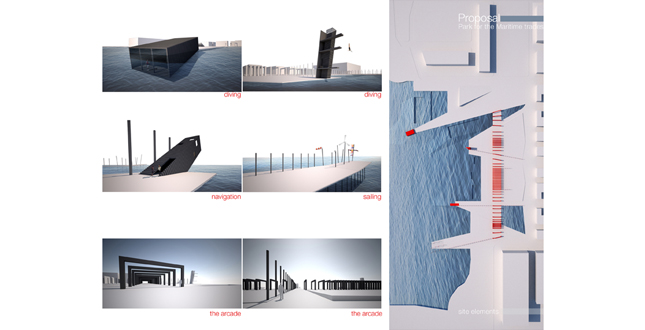 Close Me!
Close Me!Proposal — Park for the Maritime Trade. Site Elements.
Download Hi-Res ImageImage: Carolina A. Jaimes
Image 11 of 16
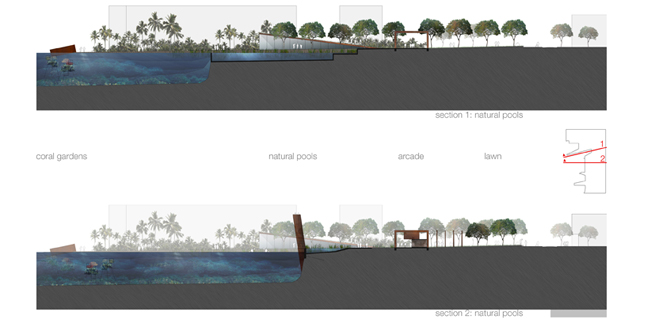 Close Me!
Close Me!Proposal — Park for the Maritime Trade. Sections: Natural pools.
Download Hi-Res ImageImage: Carolina A. Jaimes
Image 12 of 16
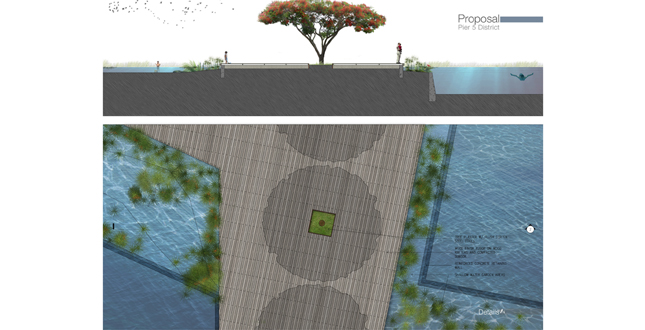
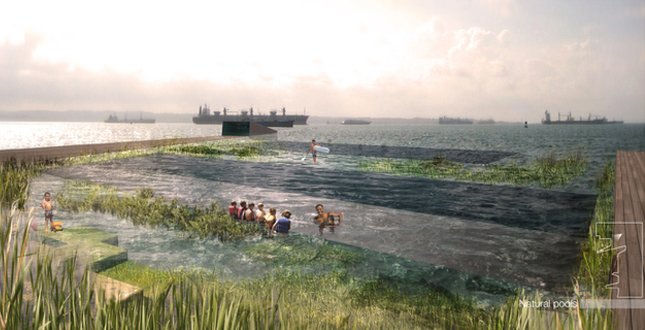 Close Me!
Close Me!Proposal — Park for the Maritime Trade. Natural pools.
Download Hi-Res ImageImage: Carolina A. Jaimes
Image 14 of 16
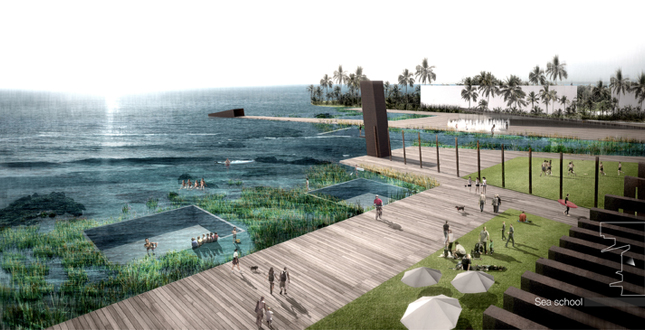 Close Me!
Close Me!Proposal — Park for the Maritime Trade. Sea school.
Download Hi-Res ImageImage: Carolina A. Jaimes
Image 15 of 16
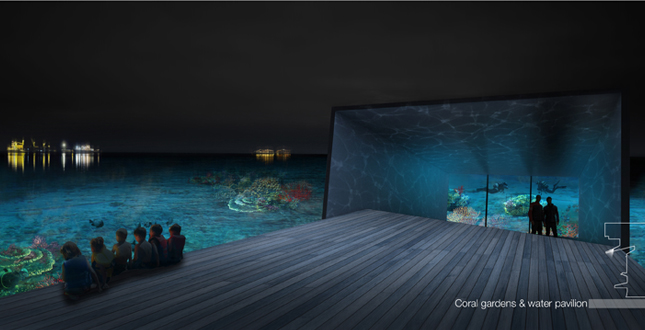 Close Me!
Close Me!Proposal — Park for the Maritime Trade. Coral gardens & water pavilion.
Download Hi-Res ImageImage: Carolina A. Jaimes
Image 16 of 16
Project Statement
The interest behind this research is the role of Individual Perception and Collective Space in highly complex urban environments, particularly the relationships between culture and the built environment and their impacts on society with a special interest in the role of the young population. The proposal challenges the role of Landscape Architecture to move beyond typical “potential” constructions and develop truly alternative conditions of “reality” that respond to the current challenges in contemporary, blighted urban life situations.
Project Narrative
Issues with poverty, informal urban growth, violence, social segregation and the lack of education are a common denominator for nearly two-thirds of the Latin American urban societal condition. For decades many agencies have been looking for strategies to reverse these ever-expanding negative impacts spawning these issues in Tropical American cities. The partial success of such strategies are characterized by a lack of an effective, inclusive and sustainable public policy that understands that education is key to change the future of the city and its inhabitants and that children are the source of the change and the success. This project seeks to qualify landscape architecture and its power to affect social constructs and social networking as a vehicle to deliver these educational opportunities as a realm to be "realized" via its response to context and to the uniqueness of the community's knowledge-based DNA.
The project is developed in the city of Colón, the second largest city of the Republic of Panamá and one of the most important commercial ports of the Caribbean Sea. Conversely, since the late 1960s, Colón has been in serious economic and social decline, plagued with strife and a lack of investment. More recently, the unemployment rate has hovered at around 40% with an even greater poverty rate. Drug addiction and a general sense of hopelessness have contributed to the prevalence of crime and violence. The city’s social and economic decline manifests itself in the visible built environment, with crumbling buildings, abandoned parks and public spaces overrun by vagrants, security bars, graffiti and no maintenance - conditions that have become characteristic of the way the population perceives the city by - an indelible stain on the psyche of those who live in and visit Colón. This overall perception affects all individuals' ability to see a future prospect for the city, those that live it and those that have the power to make policy decisions to affect it.
Ironically, Colón's foundational design make-up is characterized by a series of well-planned, gridded networks that provide an adequate physical infrastructure to allow for excellent pedestrian mobility, vehicular connectivity, sequenced public open space networks, public transportation, and vertically-mixed land uses. The current urban design fosters relationships to the available open spaces and the street's ample sidewalks, despite their quality. At the regional scale, Colón's proximity to sites of ecological and UNESCO-rated historical significance, such as the Spanish colonial forts at San Lorenzo and Portobelo and the touristic draw of nearby white sand Caribbean beaches, windsurfing around Isla Grande and undisturbed rainforest natural parks provide a tremendous potential for the future of Colón's significance as the region's most important city and base from which to access these.
Conceptually, the approach is to connect the vibrant city core, its sine of public parks along Avenida Central, to the city's edge, and at the same time dissolve the boundaries between land and sea by making it an accessible, visible waterfront - one that makes tribute to the nautical history of Colón, the essence of its experience, and one that can spark a change using landscape architecture as its leveraging medium. The ultimate goal is to establish frameworks to interlace the broken urban and social fabrics through a series of large and small scale interventions that balance notions of site, context and culture, recognizing that, as in typical urban interventions dealing with the conflicts between public spaces and social issues, time will play a key role and change will be generational. Therefore, it is important to highlight that the design is conceived to not only address strategic areas of the city, but to serve as an opportunity to catalyze discussions for new cultural, ecological, recreational and educational dynamics.
The design strategies are based on the premise that positively-affecting urban interventions, beyond being a civil right, are great contributions that seed new generations to grow-up with alternatives to violence and poverty in disenfranchised communities riddled with blight. The strategies seek to address the following:
- Integrate the site to a larger network of connective strategies available throughout the context.
- Connect with mobility hubs, to facilitate accessibility and public influx;
- Provide examples of economic and social relief for the immediate zone where it is inserted.
- Promote the use of the youth's free time in activities that foster opportunities for craft, trade, apprenticeship and cultural revival.
- Relate to context to its cultural memory of 'place.'
- Identify social, cultural and natural components that give general character to the immediate community and integrate them into the construction of collective spaces.
- Introduce high qualities in the fabrication of collective spaces that foster connections of the inhabitants with their indigenous natural environment.
The objective of the Park for the Maritime Trades as an educational facility is to promote alternatives to the inhabitants of Colón, specially the children, through the veil of landscape architecture and public open space design as the arbitrator and deliverer of these mending solutions. The programmatic strategy is the consolidation of the waterfront as the regenerative force of the site/city/region and is visible in the main components: the Sea School, the Arcade and the Civic Square. These urban and civic components will become new reference points of urban living, as well as places of collective use and collective recognition, expanding from the neighborhood to the notions of the city and the region with the ultimate goal of negating the stigma the city has endured over the last 50 years. They are geared to promote physical and cultural transformations to improve the quality of lives, reduce violence and promote economic activities that can help reduce poverty by closely stitching public space with purpose, individualized investment, and personal solvency.
It was important for the design objectives to incorporate not only a physical framework to spark the transformation of the public space, but to provide the adequate space for social, environmental and economic changes to take place as well. In the social aspect, education and civic culture are the key tools to transform, not only communities but to also change a mentality currently engendered through generational responses to the increase in blight and abandonment. Its goal then is to enrich and consolidate existing institutions, to train people in artistic and technical studies related to the maritime trades, and to seize opportunities in eco-tourism growing trend in Panamá to make Colón a destination and to catalyze change. Promoting positive changes towards the immediate environment is also of primary concern, in re-connecting the community to their context and sensitizing them to become aware of the great potential this has for their future development. Strategies include the restoration of coastal native habitats, the use of mangroves and wetland bio-filters, the inter-connectivity of urban parks, a natural pools system, the use of green roofs, the use of evaporative cooling and of shaded pedestrian corridors all are important features to the design proposal. Fundamentally, the project focuses on promoting alternative spaces and opportunities that embrace culture while encouraging social heterogeneity through education to curb neglected communities and foster long term self-sustainable self-perceptions. It is important to emphasize that this proposal relies on the notion that, through landscape architecture's response to site design, issues afflicting communities can be elevated into the visible realm to build a “healthier” society, where the profession can play a key role in the construction of a collective consciousness by creating civic components, places of collective use and collective recognition that acknowledge the rich cultural fabric of 'place'.





